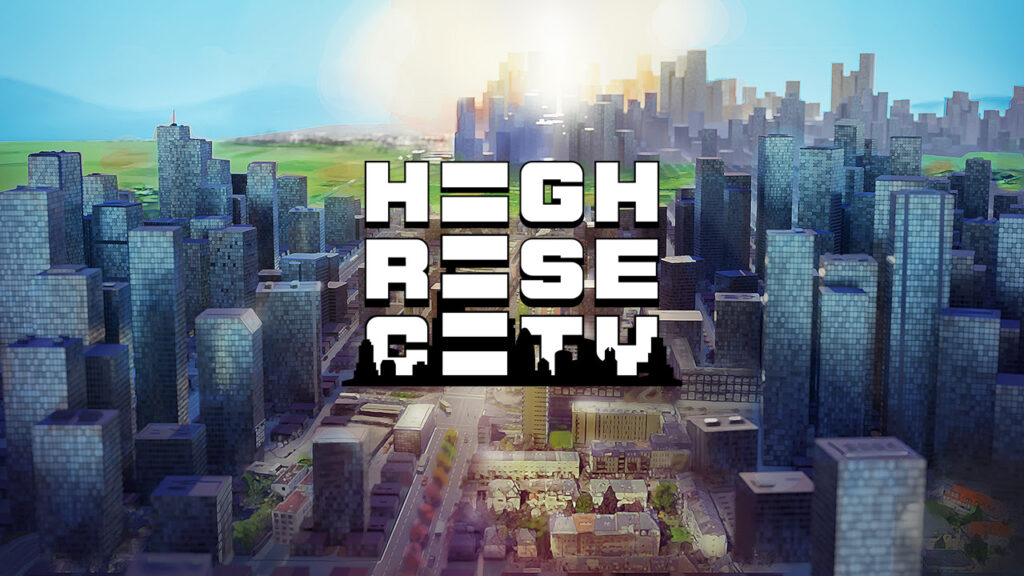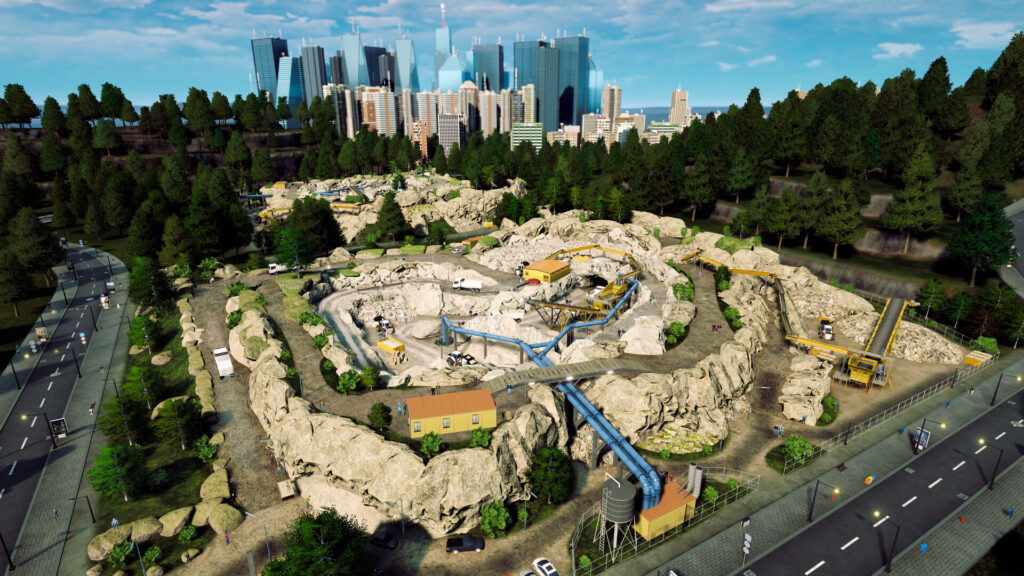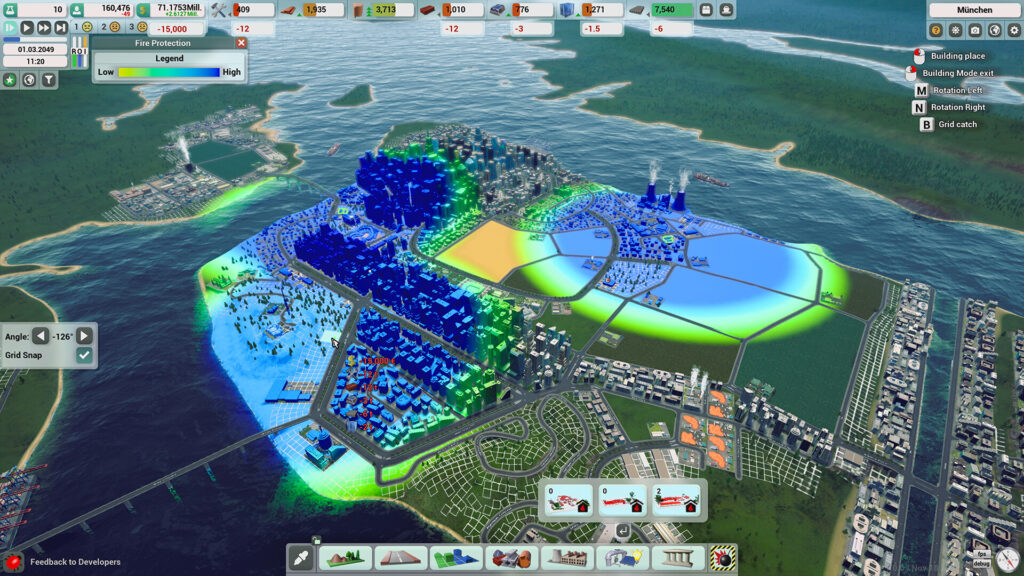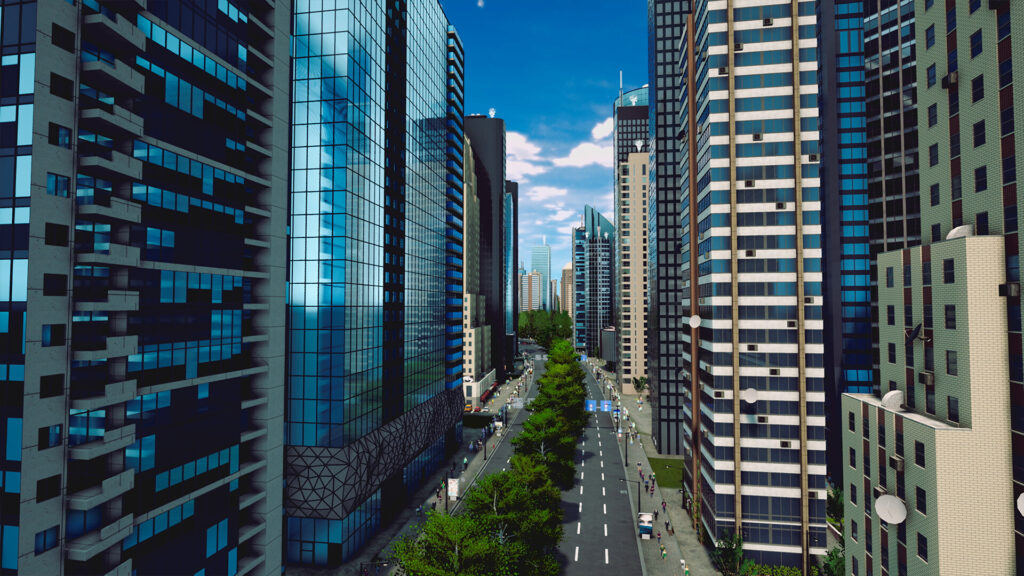
Developer: Fourexo Entertainment
Publisher: Deck 13
Platform: PC
Tested on: PC
Highrise City – Review
After constructing a massive space base and creating a beaver utopia, we felt the need to get stuck in a more down-to-earth city-building sim. Don’t get us wrong, we absolutely love the creative and outlandish settings that some games conjure up, but sometimes you just want to return to a genre’s roots. Enter Highrise City. After a successful stint in Early Access on Steam, Fourexo Entertainment’s debut title saw its full release in September. The game aims to set a new standard for the genre, and it certainly looks promising, but does Highrise City offer a good foundation for budding constructors to build their city or does it collapse from the get-go?
Story
Unlike the two examples of city building sims we mentioned above, Highrise City isn’t a story-driven experience. As the newly appointed mayor of a budding city, you are given free rein to develop things as you see fit, and that’s about the gist of what Highrise City has to offer in terms of story. This is a game that focuses pretty much only on gameplay, and there’s nothing wrong with that.
Graphics
Fourexo Entertainment found a decent middle ground between performance and visual appeal with Highrise City. While the game doesn’t necessarily look overly impressive, especially when zoomed out, this is mostly because of the sheer amount of computing power required to bring the city to life. According to Fourexo Entertainment, your city can be up to 194 square kilometers, hosting 30,000 buildings, 20,000 people (out of a potential one million inhabitants!), and 5000 cars. That’s a lot of elements for a game to keep track of, so it’s logical that the game doesn’t depend on highly realistic graphics. Your mileage may vary here because Highrise City offers DLSS support, provided you have a graphics card that is compatible, and in this case, we imagine things do look quite a bit better. Of note is that you can also completely change your viewpoint at any time, as you can summon a truck and take a drive through your city, enjoying it from the perspective of a city inhabitant. In this mode, there is no collision detection, however, so zooming through other vehicles does break the immersion somewhat.
Sound
While we wouldn’t go as far as to say that Highrise City’s sound design is underwhelming, it’s not particularly memorable either. If the music is original, then it certainly doesn’t stick, instead sounding like it was pulled from a set of pre-existing generic tunes. The limited voice acting does what it needs to, and the sound effects are alright. It probably says enough that the most exciting thing we can say about the audio is that the ambiance is immersive. The audio is also dynamic, as it accurately changes depending on where you are in the city, although this is something that is so basic and logical that it doesn’t really stand out either.
Gameplay
Your first order of business in Highrise City should be to play through the tutorial, even if you’re an experienced player of city-building sims. The game’s core experience still involves constructing buildings and managing resources of course, but the game goes beyond the basics, and understanding the synergy between the various structures is essential. This is something we learned the hard way, as simply jumping in and trying to figure things out for ourselves became confusing really quickly. Fortunately, the game’s extensive tutorial covers every aspect of the game, from the familiar basics to the elements that make Highrise City stand out from the crowd. The game’s more unique gameplay involves layered management of not just resources but people as well. The average city builder will simply tell you you’ll need x amount of resources, but Highrise City requires you to have specific infrastructure while also keeping your workers happy before you’re able to start constructing some of the more elaborate buildings.
These finer mechanics are difficult to explain without going in way too much detail, but they do make sense in practice. It’s essential to have a source of energy, like wind turbines, for example, so that you can produce electricity, which is needed for specific buildings. Likewise, your citizens require basic amenities first and foremost, but they’ll also need a police station nearby to feel safe, and places to relax like a park or a movie theatre. Rather than simply going for a gameplay loop that tells you to just build bigger and more elaborate structures, you’ll actually need to manage your city instead of simply expanding it. There is a tremendous amount of depth here, but once you are familiar with the basics, responding appropriately to challenges quickly becomes second nature. Your budding city is far from a utopia, however, and you’ll be facing dilemmas like choosing between cheap but dirty power, like mining for coal, or opting for more expensive but renewable resources like wind power. Other things to keep in mind are traffic management, including setting up your own public transport network, and also ensuring you have enough food production facilities so that your population remains well fed. Something we hadn’t seen before in a city building sim is having to set up your water grid as well, as your buildings both need a supply of fresh water and a way to flush their toilets and drain their bathtubs.
The unprecedented depth of the gameplay logistics means that genre enthusiasts can really sink their teeth into the game, and so Highrise City offers nigh unlimited replay value, especially in maps where you’ll need to adjust your carefully laid out city plans because resource distribution isn’t ideal. The maps are based on real-life locations like New York or Vancouver, although you are given free rein to rename your city to whatever you want. It’s a small touch, but it adds to the tremendous sense of freedom that comes with creating a mega city from scratch where you have control over every detail. The downside to Highrise City’s depth is that the game does require a considerable investment of time and dedication and so it is less suitable for a more casual audience. That’s if you can even run it. The minimum system requirements to be able to run this city builder are higher than those of many recent AAA titles like Baldur’s Gate 3 or Mortal Kombat 1 as you’ll need at least an i7 processor and 16GB RAM. Even then, you’ll notice considerable performance slowdowns when your city reaches a certain threshold. This does emphasize that Highrise City is perhaps ahead of its time for anyone but diehard genre enthusiasts, but it also bodes well for the longevity of the game.
Conclusion
When it comes to city-building sims, Highrise City definitely sets a new standard in terms of depth and freedom, but the downside is that the game isn’t very accessible for newcomers. Add to this that you’ll need a top-of-the-line PC to properly run the game, and you’re looking at a title that will only appeal to a very dedicated niche audience at the moment. However, as the game continues to receive updates, more content, and mods, and with PC hardware becoming cheaper over time, we imagine that Highrise City will prove to be future-proof and that it will build -pun intended- its audience over the coming years. This is all the more impressive because Highrise City is Fourexo Entertainment’s debut title, and we can’t wait to see what the studio brings after this.
2 Comments
Leave a Reply
You must be logged in to post a comment.









[…] building cities with managing a railroad network, forming the midway point between games like Highrise City and Railway Empire. Trains are essential to your success; whether you’re using them to move goods […]
[…] had quite a few good things to say about city management game Highrise City. With its in-depth gameplay, it offers something new especially for hardcore fans of the genre. And […]